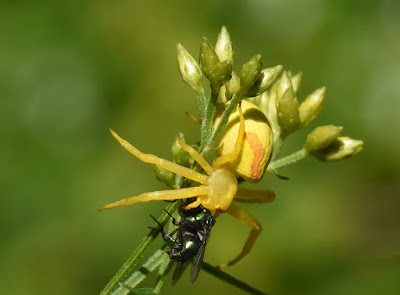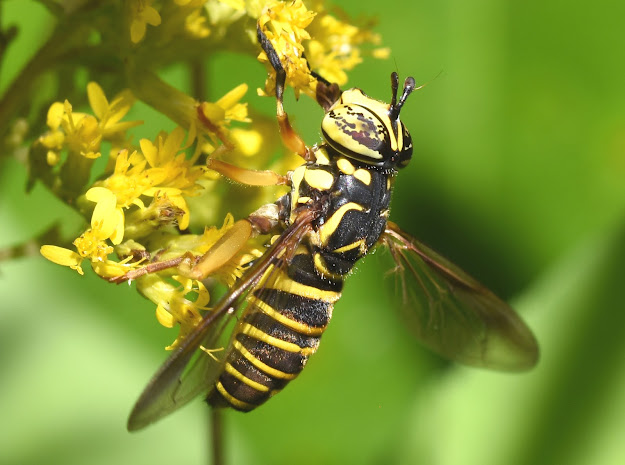 |
Eastern Kingbirds
|
Birding parallels bird life in being partly solitary, partly
social. For both us birders and our feathered friends the prizes often come first
from individual watchfulness, then sharing. As it is at the nest, so it is to
many of us who keep an eye on natural life.
 |
Kingbird home in the
tupelo tree (center)
|
Don, one of the birding regulars at Halibut Point, spotted a
nest under construction in a tree overhanging the quarry. A pair of Kingbirds
flew in and out with material in their beaks.
After a successful incubation period there were two new
mouths for the Kingbird parents to feed. Usually one would stay on the nest
shading the newborns from the sun while the other foraged to keep up with their
relentless appetites.
The arrival of an adult with a captured dragonfly would
precipitate a family drama.
Mom and Pop look identical to an outsider. It was hard to
tell whether the stay-at-home mate was demanding a share of the prey, or
whether their commotion had to do with dismembering the insect to feed to the
young ones.
Over the next few weeks the babies prospered, fledged, and
exercised their wings. The day after this photograph was taken they were gone
from the nest. I hoped they hadn't tumbled out or been pirated off by a
predator. It hardly seemed likely that they could have reached flight readiness
overnight.
Later that day Don saw the fledglings scrambling around
higher up in the tree canopy. They were still under parental care and feeding
but pursuing development outside the confinement of the nest. I was
disappointed to miss witnessing their first actual flight attempts.
 |
Green Heron fishing
|
Just across from the nesting Kingbirds was the favorite
hunting perch of the Green Herons, a dependable sight all spring on their
quarry promontory. I anticipated the fun of watching them teach their offspring
some fishing tricks there.
 |
Green Heron juvenile
|
The herons nested inconspicuously in a grove of trees at the
far end of the quarry. Once again it was Don who pinpointed the spot within the
canopy and away from the camera's prying eye. The pride of the parents didn't
emerge from leafy shelter until they were feathered for flight.
By the time I first saw them they were practicing heron
skills in the shadowy recesses of the tree grove, mixed in with youthful
sibling shenanigans.
I was sure the public phase of their development was at hand,
that the parents would line up their progeny for advanced fishing lessons on
the waterside ledge. But on the same day the Kingbird fledglings disappeared,
so did the Green Herons. They gave up the ready source of minnows for parts
unknown, and have scarcely been seen again. Perhaps they have had to concede
the State Park to the humans flocking there for respite in the pandemic.







































